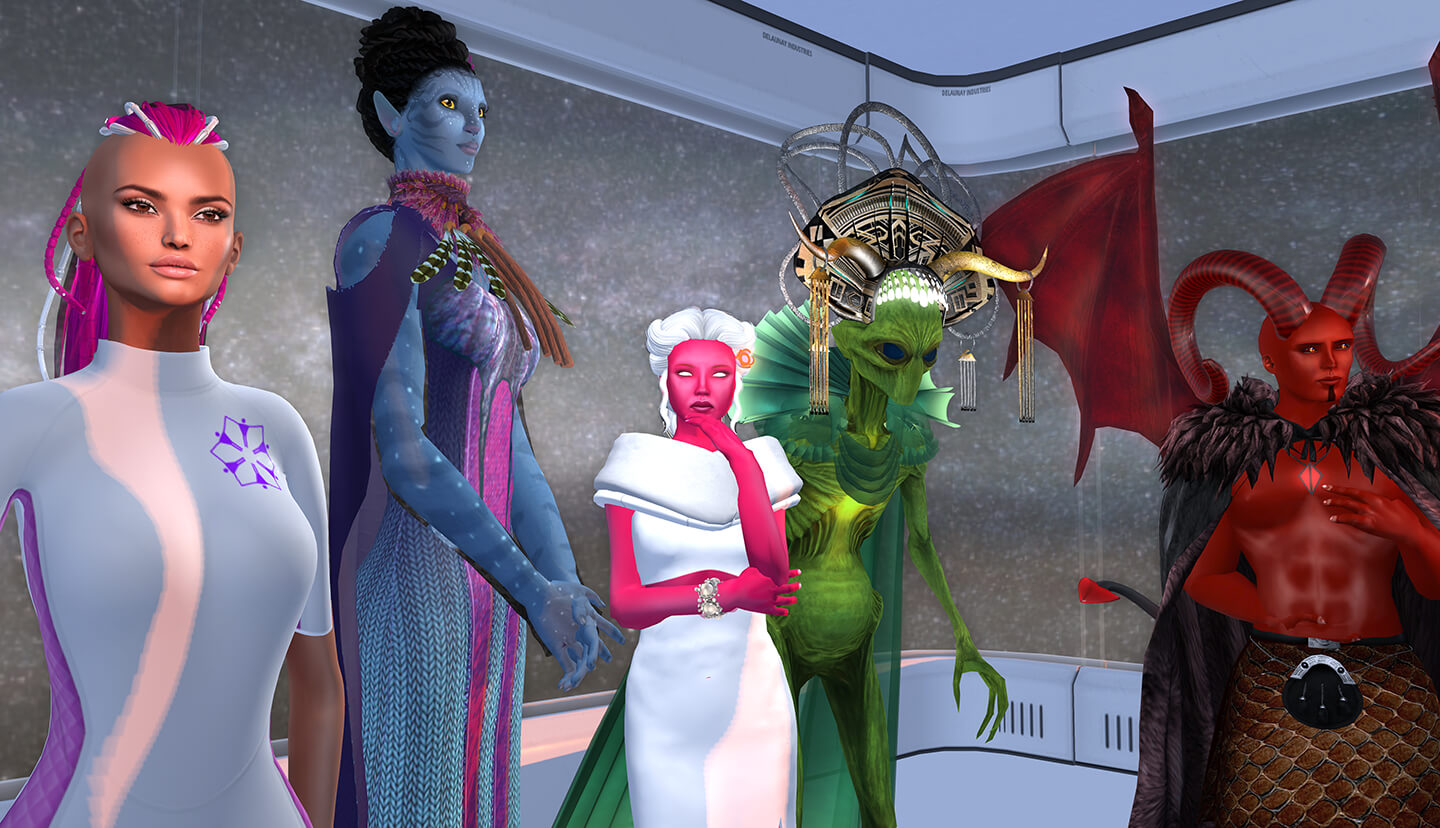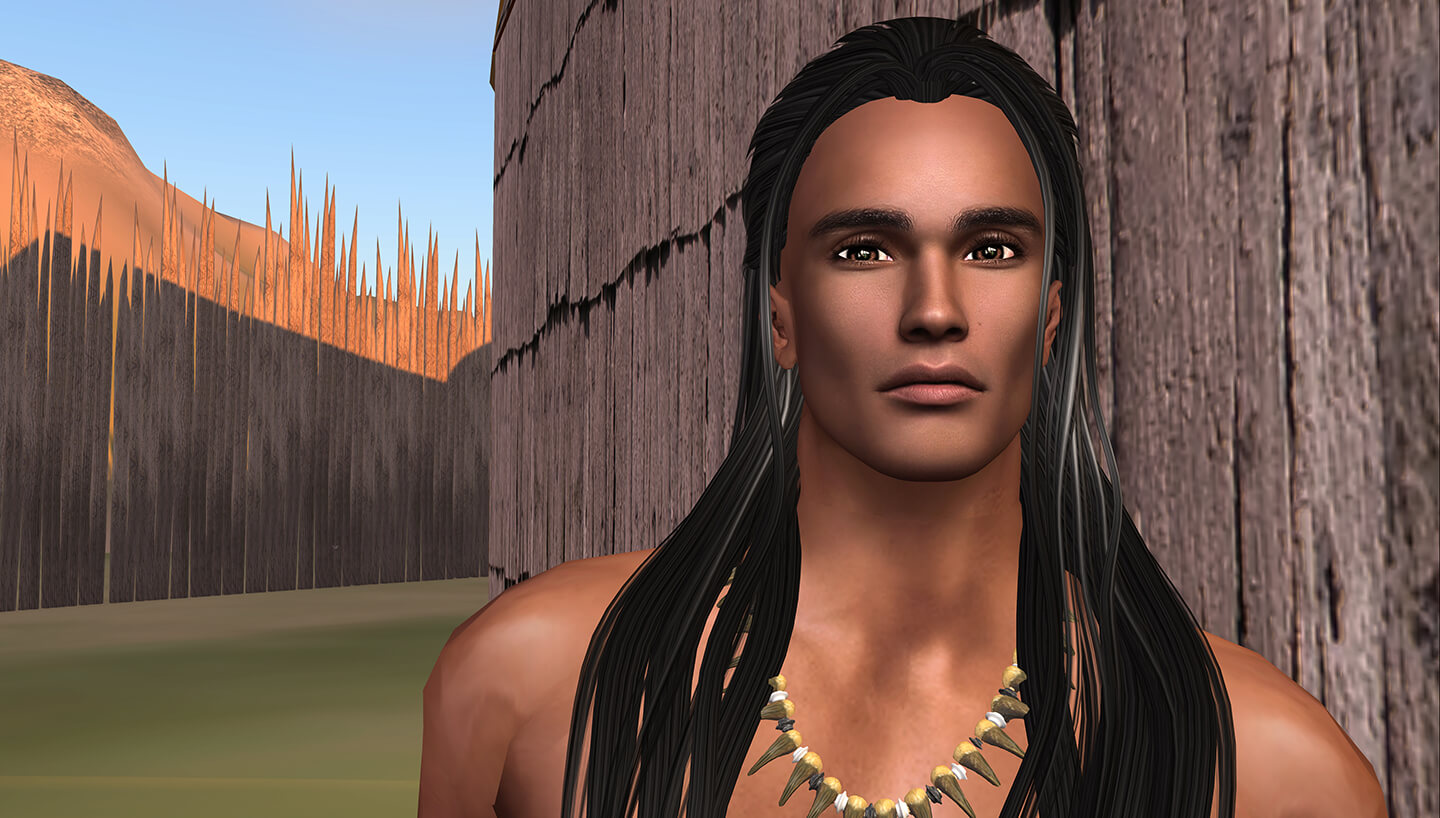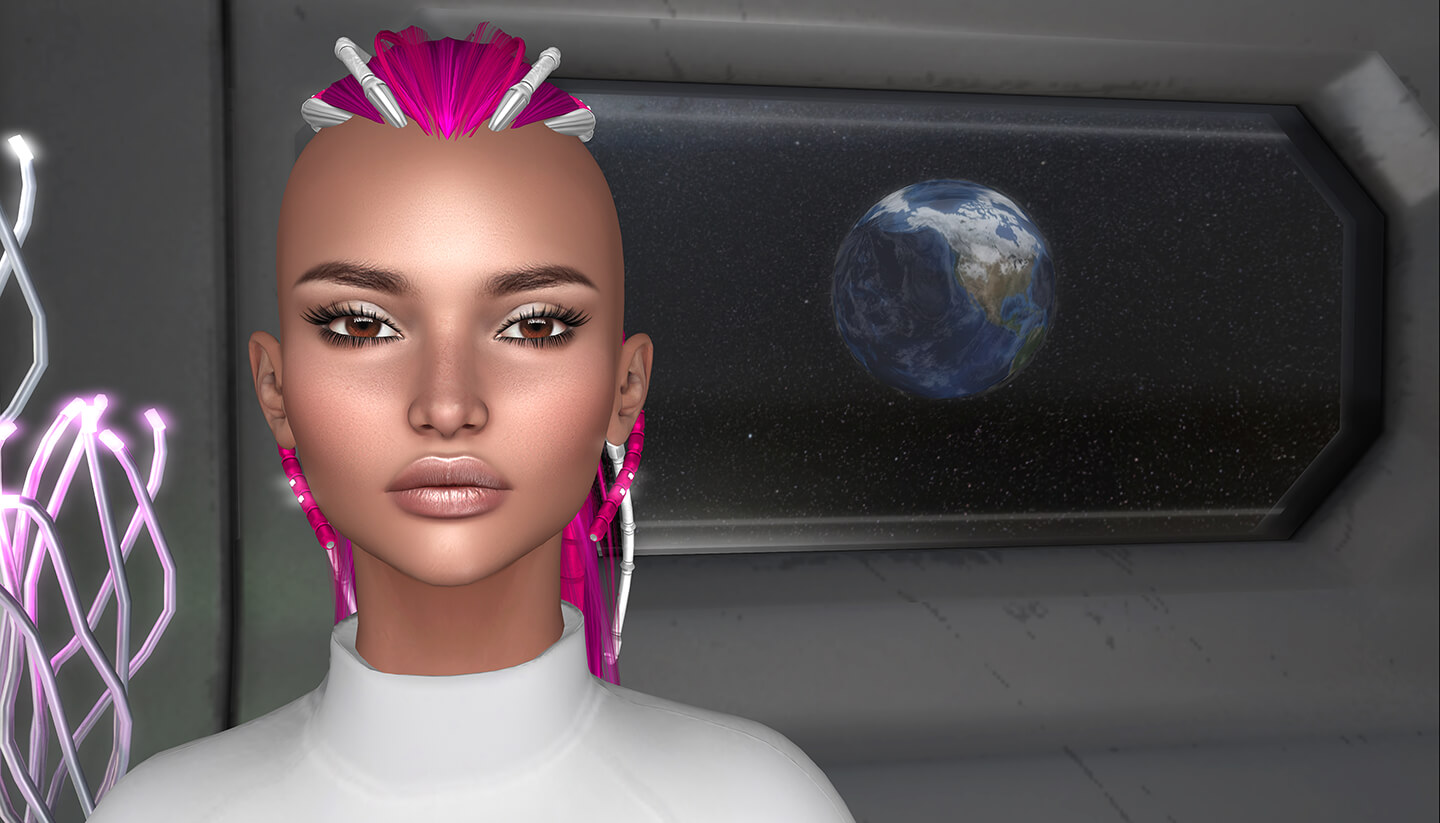Skawennati
at Miguasha National Park / Nouvelle
EXHIBIT
The Peacemaker Returns
Skawennati, Montreal, Québec skawennati.com
The Peacemaker Returns proposes a futuristic encounter designed to revisit Indigenous oral tradition and European history by way of a voyage through time. Combining past, present and virtual narratives, The Peacemaker Returns is a futuristic saga, set in the year 3025, that follows Iotetshèn:’en, a young Mohawk woman on an intergalactic mission to form an alliance with four alien nations.
She brings with her the story of Tekanawí:ta, better known as the Peacemaker, the man who brought peace, unity, and respect to the five warring nations – the Mohawk, the Onondaga, the Oneida, the Cayuga, and the Seneca – that ultimately formed the Haudenosaunee (Iroquois) confederacy.
Told using the filmmaking technique of machinima, an experimental practice of making movies in virtual environments such as video games, The Peacemaker Returns features both historical figures and beloved fictional characters such as Tekanawí:ta, Jacques Cartier, a certain president addicted to Twitter, and some of your favorite aliens. The still images, or “machinimagraphs,” allow for a more extended moment of contemplation. The Peacemaker Returns goes on to imagine future Peacemakers and considers how ancestral Haudenosaunee knowledge of peacemaking can be applied to all humans today, and to other-worldly beings one day.
The Peacemaker Returns was made possible through a collaboration between Aboriginal Territories in Cyberspace (AbTeC) and VOX.
EXHIBIT AT RENCONTRES
The Peacemaker Returns
Born in Kahnawà:ke Mohawk Territory, Skawennati is Co-Director of Aboriginal Territories in Cyberspace (AbTeC), a research-creation network of artists and academics who investigate and create Indigenous virtual environments. Their Skins workshops in Aboriginal Storytelling and Experimental Digital Media are aimed at empowering youth. In 2015 they launched IIF, the Initiative for Indigenous Futures. Her work has been widely presented in group and solo exhibitions and is included in both public and private collections such as the National Gallery of Canada and the Musée d’art contemporain de Montréal.




